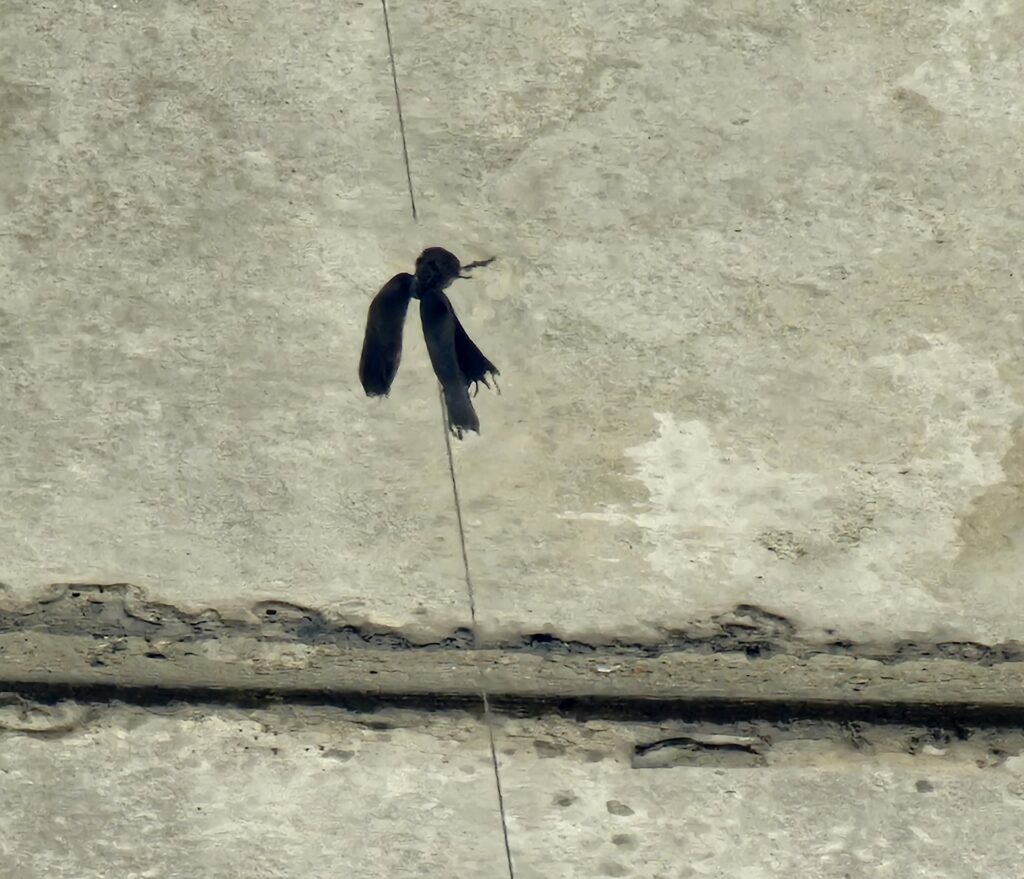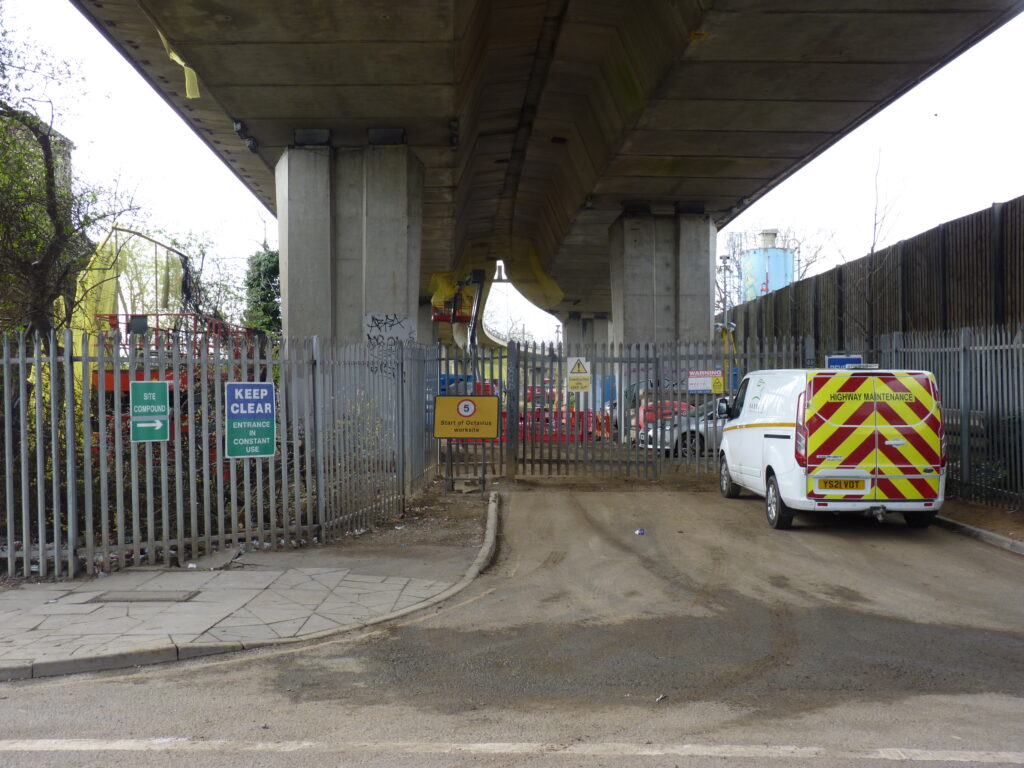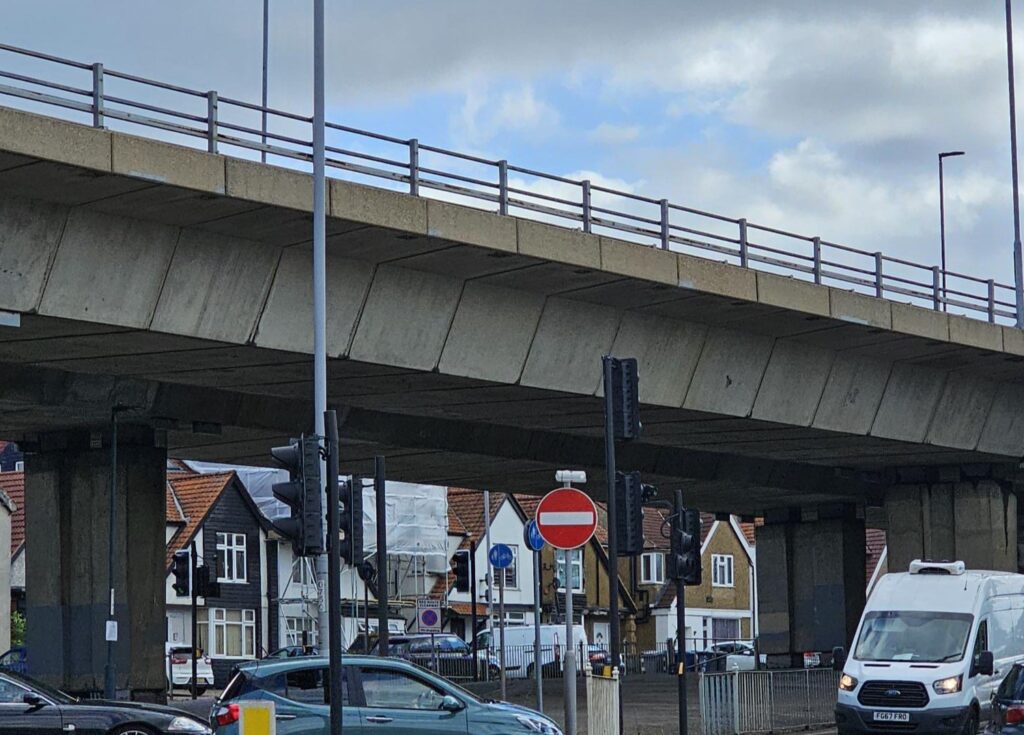At Octavius, we are proud to serve thousands of passengers from diverse backgrounds who travel across the rail and road infrastructure that we support every day. We also care about our millions of adjacent neighbours who live near our work sites and other facilities. We are committed to supporting everyone while we carry out our works. That’s why our M25 team, who started working at Five Ways Corner in Mill Hill in February this year, went that extra mile to minimise the impact of the concrete repairs out on the Southbound and Northbound M1 interchange flyovers for Connect Plus Services. When the team mobilised they noticed an Eruv attached to the underside of the bridge structure. Located on the bridge soffit, the Eruv is an important religious demarcation line for the local Jewish Community, allowing people of Jewish faith to carry out activities normally prohibited on Shabbat.
As this isn’t something the team were familiar with or had come across before, they spoke with members in the community and reached out to local synagogues to understand more about the importance of the Eruv to the faith group. Aware of the possible consequences of a damaged Eruv for the local residents, the team made sure to protect it during their operations and prevented any damage to it.
They revised the project methodology and treated the Eruv as if it was a live cable, implementing additional risk mitigation and procedures, including our buried service policy that requires exclusion zones to avoid working too close to the Eruv. Traditionally, this task of removing old concrete on the deck, would be carried out using hydro demolition, however, recognising that the high pressure would potentially put the Eruv at risk, the team manually completed this task with a PAM breakout tool attachment, reducing the risk to our workers of Hand Arm Vibration Syndrome (HAVS). Weekly checks were also carried out to ensure the line was still intact and the team regularly kept the local community updated about the works and measures taken to protect the Eruv.
The project was successfully completed at the end of May and the local community were extremely grateful to the team for their support and understanding.
Thank you to everyone who worked on this project for showing exceptional care for our lineside neighbours. You have truly embodied the values of Octavius.
What is an Eruv?
In Britain the eruv has a boundary 11 miles long and encloses an area of 6.5 square miles. It covers Hendon, Golders Green and Hampstead Garden Suburb, together with parts of Childs Hill, Cricklewood, East Finchley, Finchley and Mill Hill.
An eruv is an area within which observant Jews can carry or push objects on the Sabbath, (which lasts from sunset on Friday to sunset on Saturday), without violating a Jewish law that prohibits carrying anything except within the home. There are over 200 eruvs (or eruvim) in the world.
An eruv must be ‘completely enclosed’. The area is not enclosed by building a special wall round it – most of it is enclosed by existing natural boundaries like railway lines or walls. What matters is that the area is completely enclosed by boundaries that conform to Jewish law.
An eruv mixes the boundary between the area within the home and the area outside it. The result is that within an eruv Orthodox Jews can follow the same rules on the Sabbath that they would in their homes. Jewish law says that Jews must not carry any item i.e car keys or pushing a pram for whatever purpose public domain – outside their home on the Sabbath, even if they are allowed to carry them within their home. But both carrying and pushing are allowed inside an eruv because it’s regarded as within the home domain. An eruv therefore makes it easier for Jews to follow the spirit of the Sabbath by making it enjoyable and fulfilling, without breaking the rules that keep it holy.






